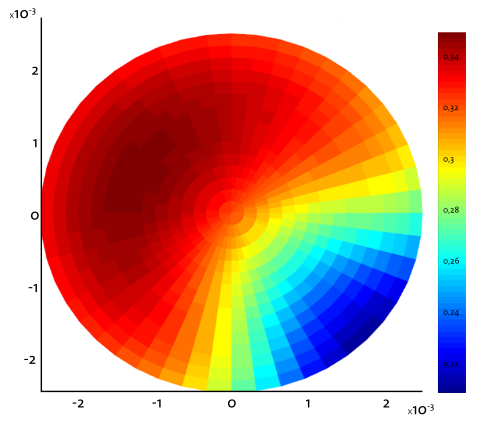The aim of this workpage is to develop and validate methods to quantify the state of interface bonding between solid materials. The idea is to use methods for measuring thermal contact resistance by dynamic heating and the results of this will be used to develop and validate a model for quantifying the state of interfacial bonding (between coating and substrate for example), with a focus on functional layers appropriate for use as thermal or corrosion protection above 1000 °C.

Temperature rise distribution on the rear face half-way through the test. — NPL Matlab model
The work will be split into five tasks:
Contact
Jiyu Wu (WP leader)
jiyu.wu@npl.co.uk
The project will establish new methods for characterising the thermophysical properties of any solid material up to 3000 °C, and launch a network of reference facilities and materials available to industry. By supporting reliable measurement practices, this project will improve the understanding of high-temperature materials and enable industries such as the aeronautics and energy sectors to develop novel and innovative materials)
Project management
Bruno Hay
Bruno.Hay@lne.fr
Impact
Jürgen Hartmann
Juergen.Hartmann@fhws.de
Project Website
Jochen Manara
Jochen.Manara@zae-bayern.de